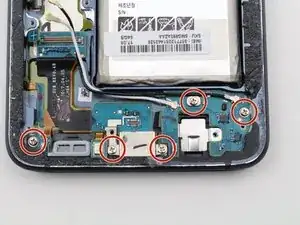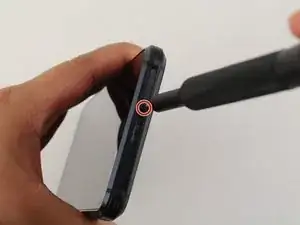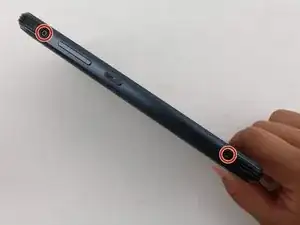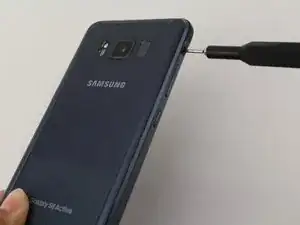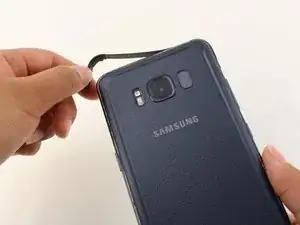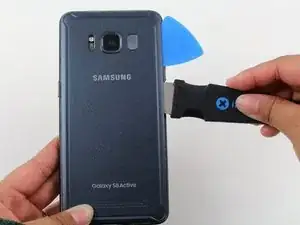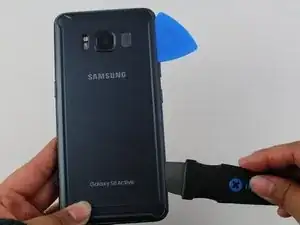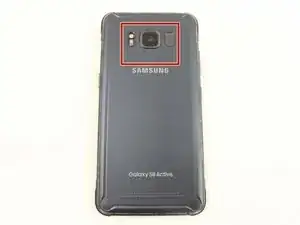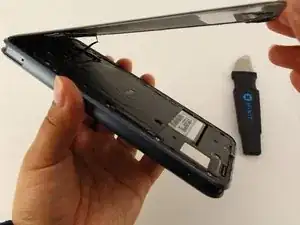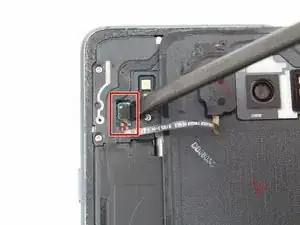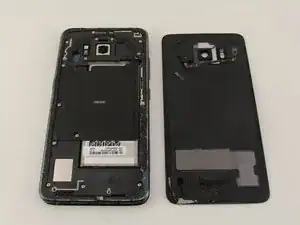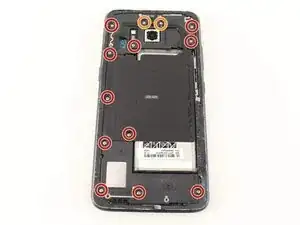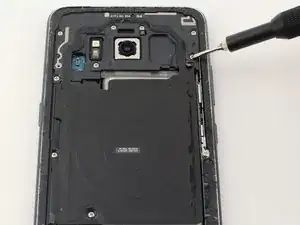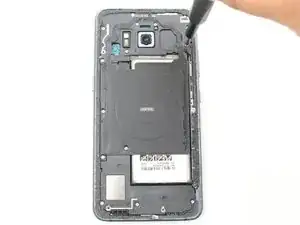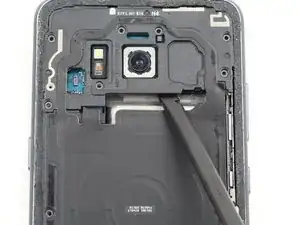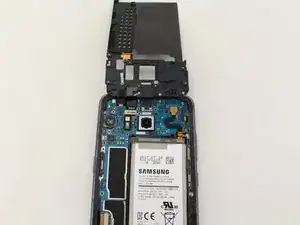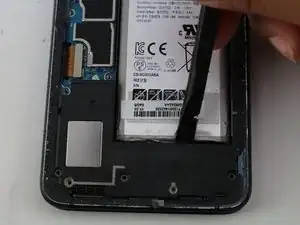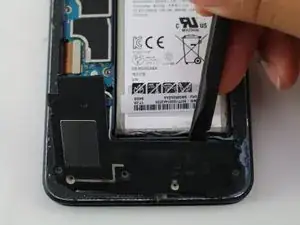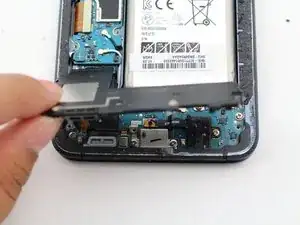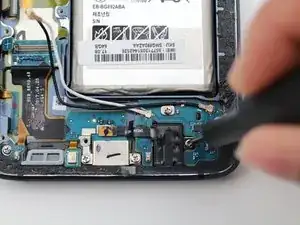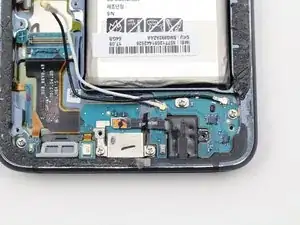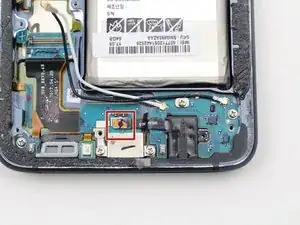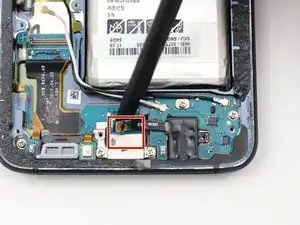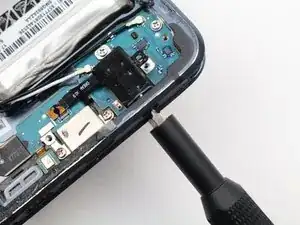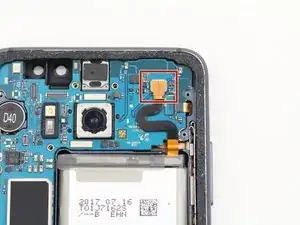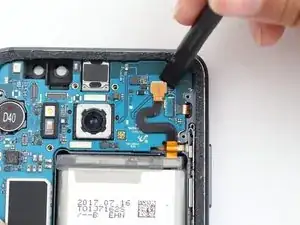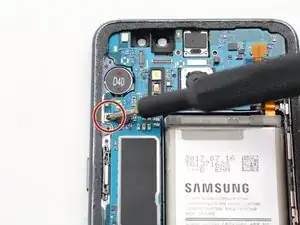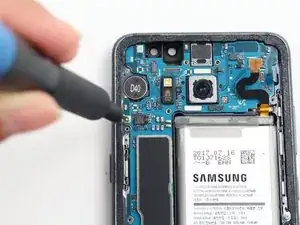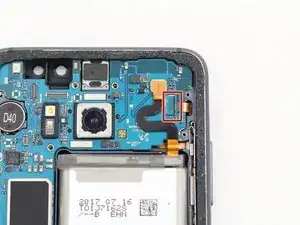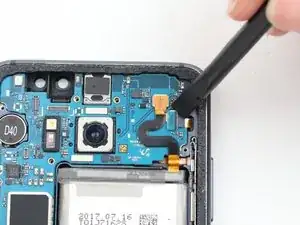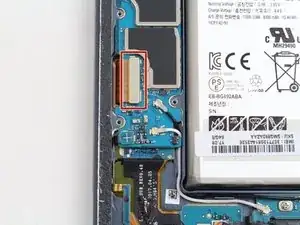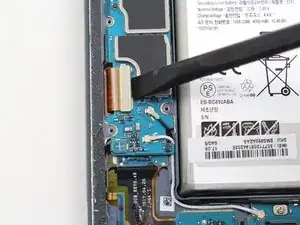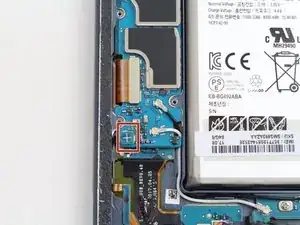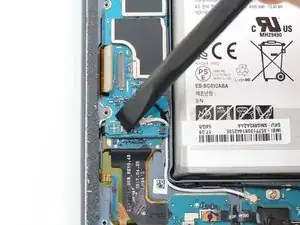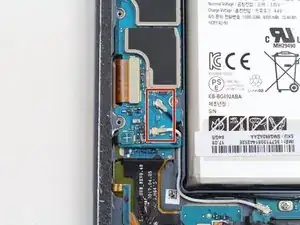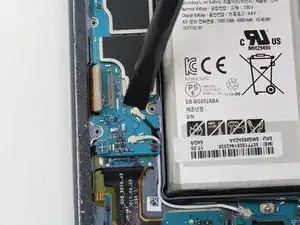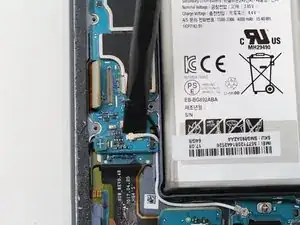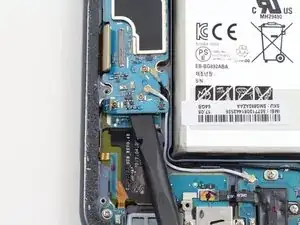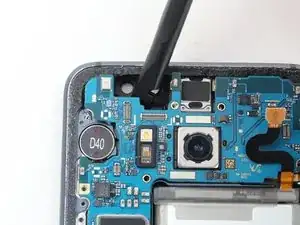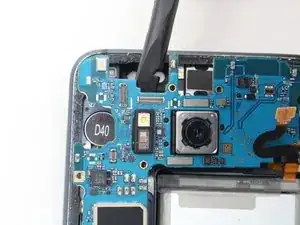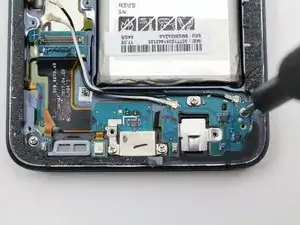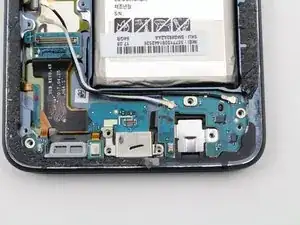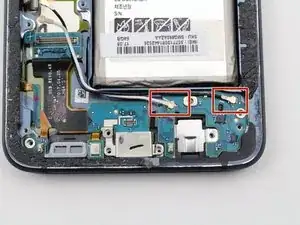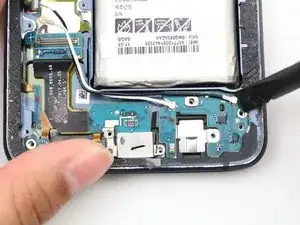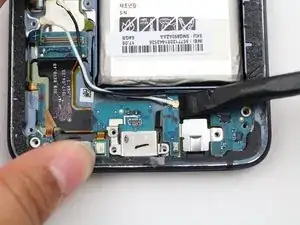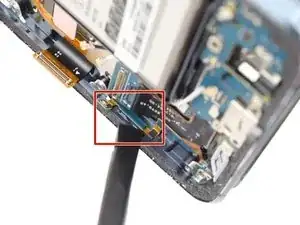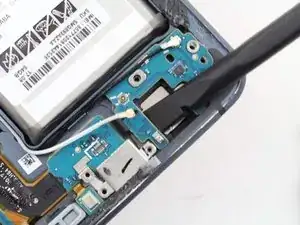Einleitung
Use this guide to remove or replace the I/O Daughterboard in your Samsung Galaxy S8 Active. Components that would warrant replacement of the daughterboard include a damaged USB-C connector or microphone.
This guide involves removing the back cover of the device, so you will need replacement adhesive to reattach the back cover to the phone.
Before disassembling your device, be sure the battery is charged below 25%. If accidentally punctured or damaged, the battery can catch fire and/or explode; if discharged below 25%, the chances of fire/explosion is decreased.
Werkzeuge
Ersatzteile
-
-
Insert and gently push the SIM card ejector tool (or an unfolded paperclip) into the small hole on the left side of the top edge of the phone.
-
Press gently to eject the SIM tray.
-
Remove the SIM card tray from the device.
-
-
-
Remove four black 3mm screws from the outside edges of the device that hold the rubber bumpers in place using the TR6 Torx Security Screwdriver.
-
Take off the rubber bumpers from the top and bottom edges of the device.
-
-
-
Use a heat gun to lightly heat the edges of the back to soften the adhesive that connects the back cover to the rest of the frame.
-
-
-
Insert the Jimmy tool under the edge of the back cover.
-
Once the Jimmy tool is under the edge of the cover, insert an opening pick into the seam to prevent the seam from closing if the Jimmy tool slips or is accidentally removed.
-
Cut slowly around the top section of the device and be careful to avoid damaging the cables for the fingerprint sensor and camera. Avoid prying too far into the top of the device to protect the fingerprint sensor.
-
Slide the Jimmy tool down the sides of the device, separating the adhesive.
-
-
-
Use the opening pick to slice through any remaining adhesive.
-
Open the back cover slightly to the point that you can see the fingerprint sensor flex cable connector.
-
-
-
Slowly flip the cover over and set it down on top of the rest of the device.
-
Disconnect the fingerprint flex cable using the flat end of a spudger.
-
Remove the back cover.
-
-
-
Remove eleven 3.5 mm screws using a Phillips #00 Screwdriver.
-
Remove two 2mm screws using a Phillips #00 Screwdriver.
-
-
-
Insert the Phillips #00 Screwdriver into the headphone jack located on the bottom edge of the device.
-
Gently push the screwdriver upwards, ejecting the headphone jack.
-
-
-
Disconnect the Volume Up, Volume Down, and Bixby button flex cable using the flat end of a spudger.
-
-
-
The motherboard rests on top of the daughterboard, and there is a flex cable connecting them. Disconnect the flex cable that connects the motherboard to the daughterboard using the flat end of a spudger.
-
-
-
Position the flat end of a spudger at the top edge of the motherboard.
-
Carefully pry up and remove the motherboard.
-
-
-
Detach the flex cable that connects the charging port to the motherboard using the flat end of a spudger.
-
-
-
Starting from the middle of the I/O daughterboard, carefully lift the daughterboard up using the flat end of a spudger.
-
Remove the I/O daughterboard.
-
To reassemble your device, follow these instructions in reverse order.
Ein Kommentar
Thanks for writing this guide! It let me fix my phone successfully :)
Here are a few tips for anyone else trying to follow this guide:
- The screw sizes (3.5mm vs 2mm) are off. All the earlier screws are 3.5mm, and all the later ones are 2mm
- It’s a bit risky, buy you may need to gently use something sharp to cut away the back cover. I very carefully used an exacto knife, only cutting in a few millimeters to get it started. Then I switched to a putty knife.
- Connect the motherboard and the IO daughterboard before inserting them back into the phone.
- The black and white antenna cables must be placed very particularly to allow the loudspeaker to fit. Route them through the small notch in the motherboard, which you must do before putting the motherboard back in.
- Make sure the loudspeaker assembly, NFC and charging coil are flush with the back cover when you insert them. This requires aligning the tabs at the edges underneath the adhesive. This is important if you want the back cover to fit properly.
